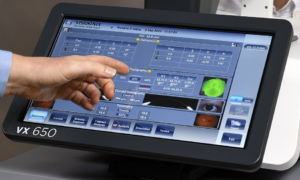July 8, 2020

A new study showed that technological advancements in healthcare, including service robots, artificial intelligence (AI) and digital communication, has the ability to improve performances of the industry as a whole and can be used in response to the challenges facing the industry in the future, such as COVID-19 outbreaks, according to reporting by Samantha McGrail on HIT Infrastructure.
The drivers of the technological change include increasing access to healthcare and reducing cost of care, consolidating and coordinating health-care delivery, facilitating chronic disease prevention and management and responding to demographic trends, researchers said.
The study leveraged interviews from hospitals and home agency administrators, union representatives, healthcare IT experts and consultants and technology developers from April 2018 to June 2019.
Other Articles to Explore
Researchers uncovered three types of emerging technologies most aligned to the health-care sector’s guiding objectives, including digital communications and telepresence, semi-autonomous service robots and artificial intelligence.
Digital communications technologies have a broad range of applications, including in the home-care setting and virtual patient care, such as telehealth, telemedicine and telehospitals.
Digital technologies have allowed a smoother transition from paper-based to electronic health records and allowed for richer and more efficient ways of leveraging interconnected health records, researchers said.
Caregiver machines accept external commands from patients and providers and can operate on their own by taking in information, processing and reacting. A machine like a service robot keeps both patients and providers safe during a pandemic by lessening contact.
The use of AI in healthcare is also becoming more and more widespread. AI has an ability to “teach” itself, rather than following predetermined directions given by programmers, which makes it more useful than other technologies.
Machine learning, a form of AI, allows technology to develop its own rules and response by learning from already existing data, and can essentially enhance existing digital technology, researchers explained.
Researchers emphasized three main choice points providers should focus on when deploying technologies. Those included not underestimating the power of payment models, encouraging experimentation and novel uses of technology and prioritizing the work, not the technology.



























